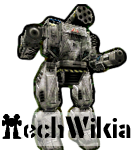

- #Battletech flashpoint unwelcome guests software#
- #Battletech flashpoint unwelcome guests code#
- #Battletech flashpoint unwelcome guests free#
#Battletech flashpoint unwelcome guests code#
Linux’s ALSA HDA Code Finally Seeing AMD Stoney Ridge Support. In this episode, the hosts talk about the results of JOTA 2018, FCC Part 15 rules, the sun and its atmosphere, new satellites, cryptocurrency vulnerabilities, Fedora, SDR with the Raspberry Pi and much more. Welcome to Episode 260 of Linux in the Ham Shack. LHS Episode #260: The Sun’s Massive Ejection. As the needs of our people have changed, the way we assess the IT products we use has also matured. Scaling that quickly has been an incredible (and important) stress test for the IT organization. On top of that, Red Hat has grown in the past five years, from roughly 5,700 associates to more than 12,500. Our challenges mirror those of other IT departments around the world: IT optimization, agile integration, cloud-native application development, automation-these challenges impacting the way IT departments operate today. When I think about the target customer for Red Hat products and services, someone seeking innovative technologies for driving digital transformation at organizational scale, I imagine a customer who looks an awful lot like the IT department at Red Hat. IBM’s Red Hat Deal Leaves Investors Without A Margin Of Safety. 
That’s helpful, but it’s also productive to look at the downsides – not of CI/CD itself, but of common mistakes organizations make, especially when they’re just starting out.
#Battletech flashpoint unwelcome guests software#
What shapes the long-term success of your CI/CD effort? A faster, more automated pipeline for software development? We recently outlined 4 success factors when getting started with CI/CD – and all led back to culture.
Getting started with CI/CD: 6 pitfalls to avoid. Red Hat achieves AWS Container Competency status. They covered best practices for achieving the SP800-190 recommendations on OpenShift. In this briefing, Twistlock’s John Morello and Red Hat’s Dirk Herrmann gave an in-depth look at the recent NIST Special Publication SP800-190 on Container Security and why it matters if you are deploying containers. OpenShift Commons Briefing: Container Deployment and Security Best Practices John Morello (Twistlock) and Dirk Herrmann (Red Hat). And, it took another decade for Linux to gain the dominant position in the fabled “Top 500″ list of most powerful computers on the planet. In fact, Linux wasn’t even a blip on the supercomputing radar until the late 1990s. #Battletech flashpoint unwelcome guests free#
This is an amazing feat for the little Free Software Kernel That Could, and one heck of a great bragging point for Linux enthusiasts and developers across the globe. The most complicated, powerful computers in the world-performing the most intense processing tasks ever devised by man-all rely on Linux.

Of the top 500 supercomputers in the world, approximately zero of them don’t run Linux (give or take…zero). As we sit here, in the year Two Thousand and Eighteen (better known as “the future, where the robots live”), our beloved Linux is the undisputed king of supercomputing.







 0 kommentar(er)
0 kommentar(er)
